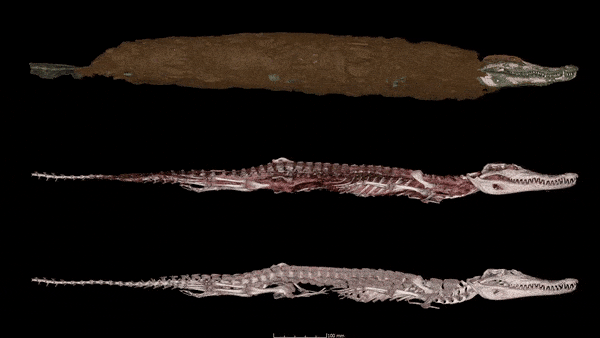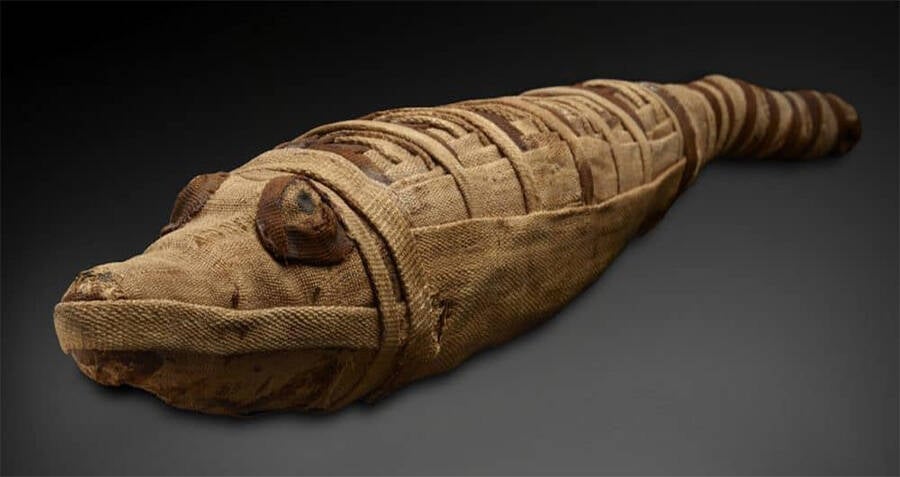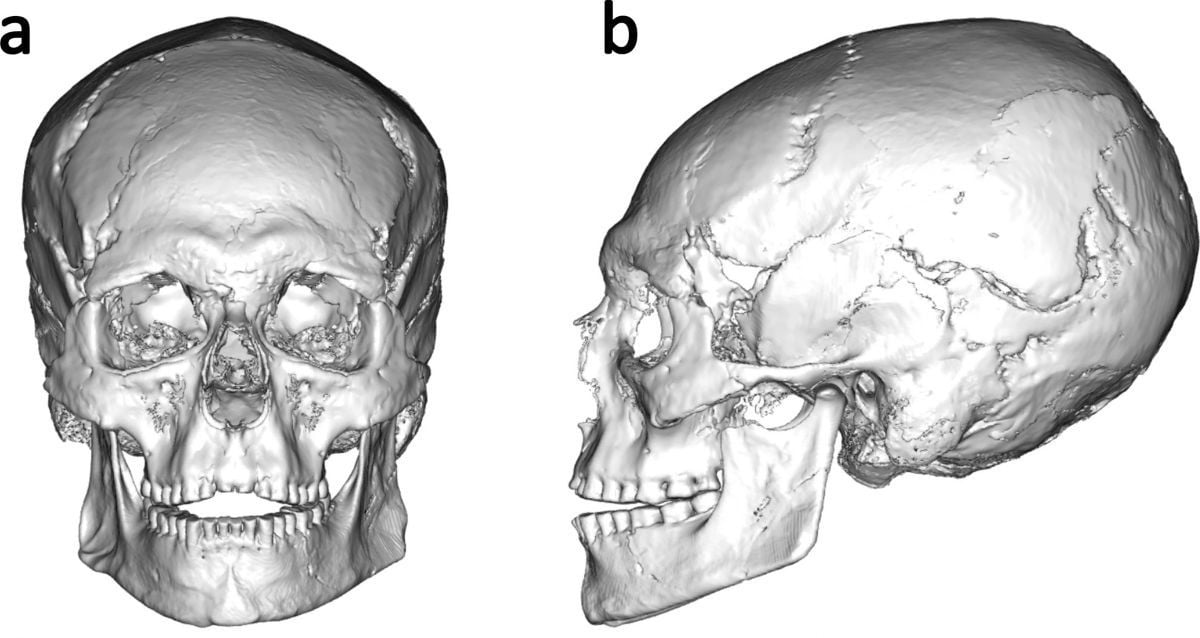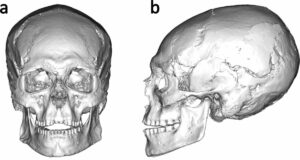“Unveiling Secrets of the Nile: Did Ancient Egyptians Mummify Crocodiles for a Hidden Purpose?”
The study, published in the Journal of Archaeological Sciences, examined a 2,000-year-old mummified crocodile that was discovered at Kom Ombo.
To examine the corpse without damaging any bones, soft tissue, and the bandages, the archaeologists used synchrotron scanning — and what they found was unbelievable.
“The most probable cause of death is a serious skull fracture on the top of [the] skull that caused a direct trauma to the brain,” the researchers wrote. “The size of the fracture as well as its direction and shape suggest that it was made by a single blow presumably with a… thick wooden club, aimed at the posterior right side of the crocodile, probably when it was resting on the ground.”
Researchers suggest that the hunter, and probably carcasses-for-mummification supplier, likely sneaked up on the beast and whacked it on the head and then took the body away to be turned into a mummy.

Porcier et al.Detailed scans of the layers inside the crocodile mummy.
Furthermore, the study found that the crocodile’s mummification process started “very rapidly after the death,” additionally suggesting that the animals was hunted specifically to be embalmed. The supplier then masked the dent in the animal’s skull from the injury and treated its corpse with oil and resins. Finally, they wrapped the crocodile in layers of linen.
The quick turnaround time of the crocodile’s mummification right after its death is further evidenced by the fact that the mummy’s stomach still contains the animal’s last snacks — reptile eggs, insects, a rodent, and fish.













